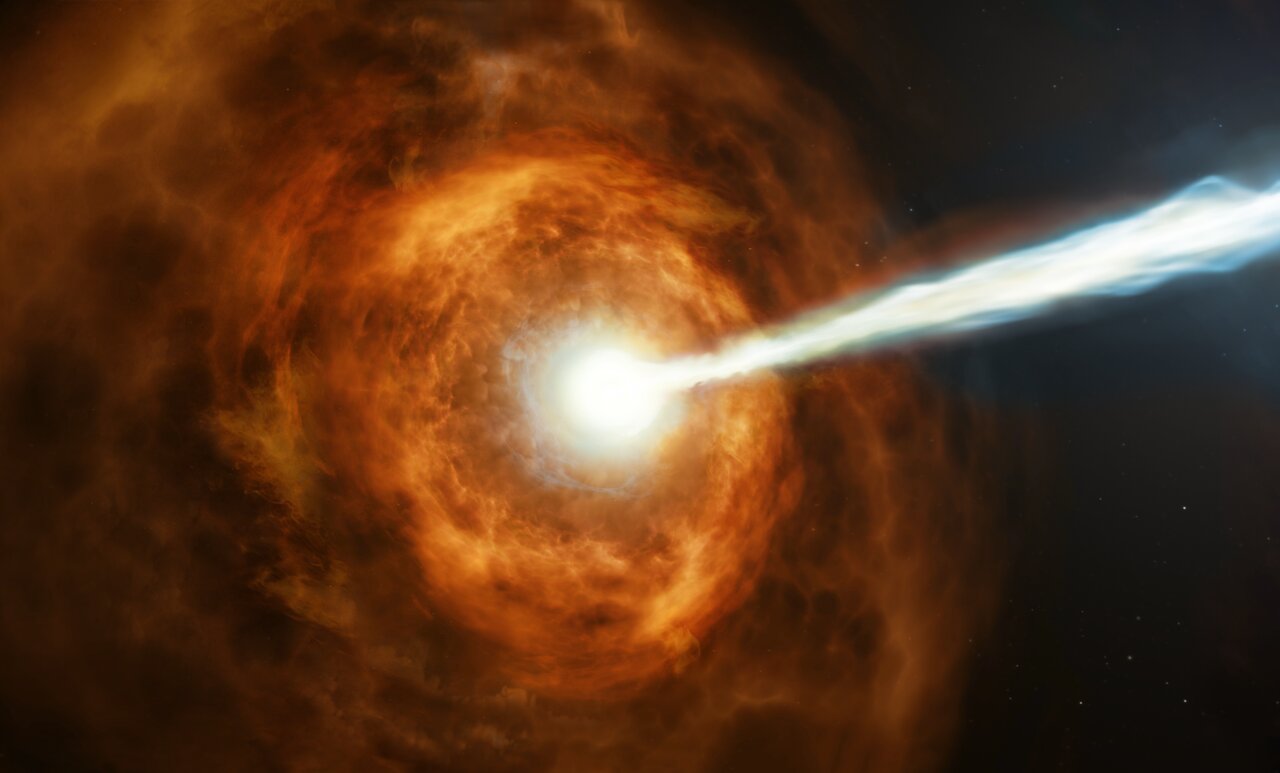
The Hubble Space Telescope has observed the highest-energy ever gamma-ray burst, called GRB 190114C. Gamma-ray bursts are “the most powerful explosions in the universe,” according to the European Space Agency, and this particular burst was even brighter and longer-lasting than most. It was first detected in January this year by other telescopes, and since then Hubble has trained its view on the source to learn more about the burst.
A gamma-ray burst is an emission of large amounts of gamma rays, which are similar to visible light but much higher energy. The light from the burst had energy of 1Tera electron volt (TeV), which is equivalent to one trillion times the energy that visible light has per photon. Scientists have been hoping to observe light from such a burst, so now they can look into what caused this extreme event.
“Hubble’s observations suggest that this particular burst was sitting in a very dense environment, right in the middle of a bright galaxy five billion light-years away,” one of the lead authors, Andrew Levan of the Institute for Mathematics, Astrophysics & Particle Physics Department of Astrophysics at Radboud University in the Netherlands, explained in a statement. “This is really unusual, and suggests that might be why it produced this exceptionally powerful light.”
In addition to Hubble, scientists also gathered data about the burst from the European Southern Observatory’s Very Large Telescope and the Atacama Large Millimeter/submillimeter Array. By observing the pair of interacting galaxies that were the source of the burst, they could see that it stemmed from the nuclear region of a massive galaxy. This indicates that the extreme energy generated is related to a denser environment than a typical burst.
“Scientists have been trying to observe very-high-energy emission from gamma-ray bursts for a long time,” lead author Antonio de Ugarte Postigo of the Instituto de Astrofísica de Andalucía in Spain said in the same statement. “This new observation is a vital step forward in our understanding of gamma-ray bursts, their immediate surroundings, and just how matter behaves when it is moving at 99.999% of the speed of light.”
The findings are published in the journal Nature.
Editors' Recommendations
- NASA’s Swift Observatory is back to observing gamma-ray bursts
- This cosmic system has a weird gamma ray heartbeat and scientists have no idea why
- Hubble solves the mystery of the bizarre disappearing exoplanet
- Hubble images dusty galaxy to learn about supermassive black holes
- This week’s Hubble image illustrates an ancient Egyptian myth




